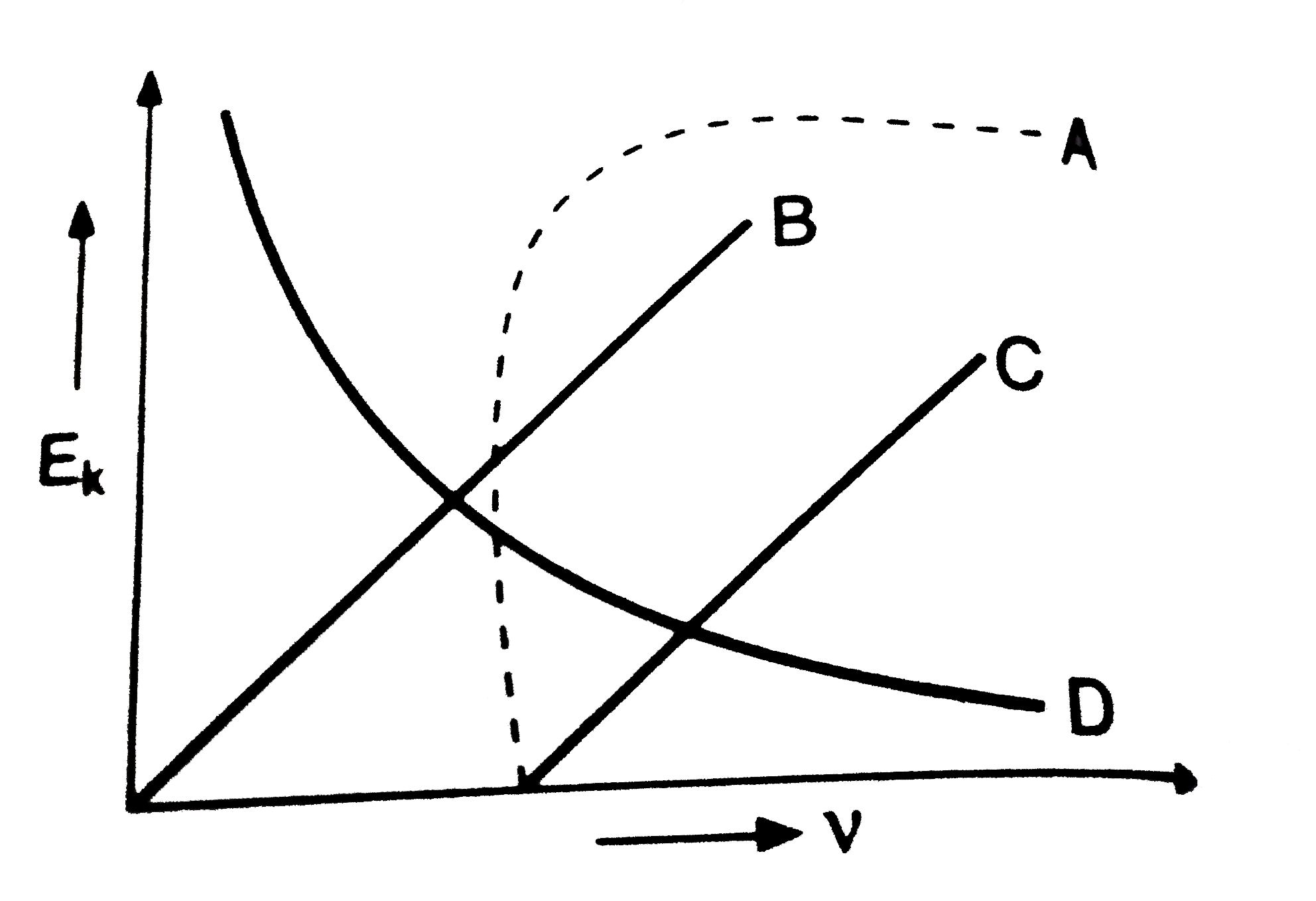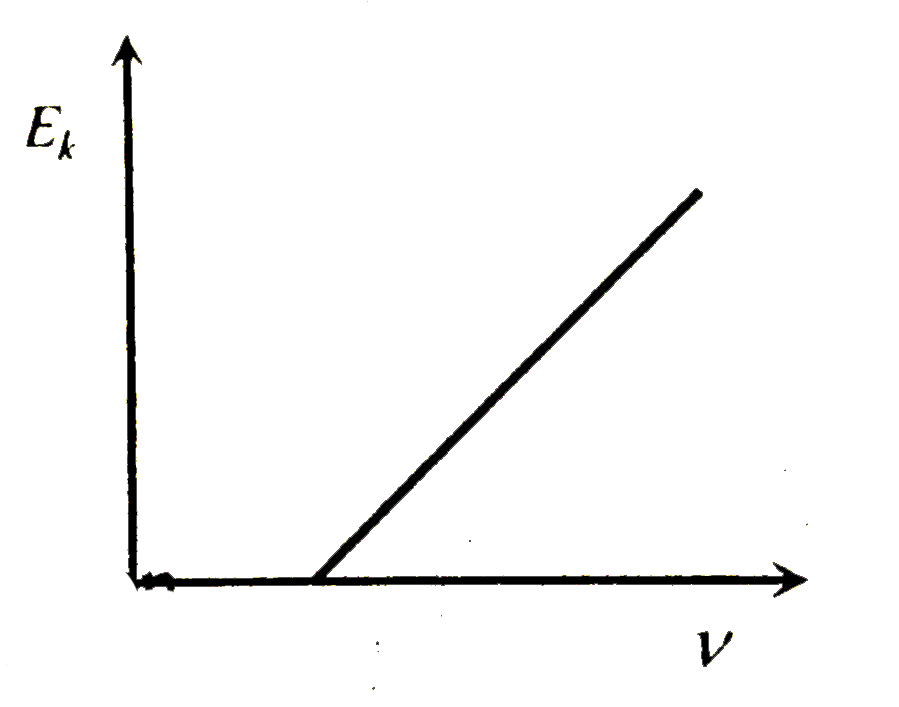In photoelectric experiment set up, the maximum kinetic energy (kmax) of emitted photoelectrons was measured for different wavelength (λ) of light used. The graph of kmax vs 1λ was obtained as shown in first figure. In the same setup, keeping the wavelength of incident light fixed at l, the applied potential difference was varied and the photoelectric current was recorded. The result has been shown in graph in second figure.
(a) Find λ is Å
(b) Taking the photo efficiency to be 2% (i.e. percentage of incident photons which produce photoelectrons) find the power of light incident on the emitter plate in the experiment. [Take hc=12400eVÅ]

The correct Answer is:(a) 5536Å , (b) 0.089W
Step by step video, text & image solution for In photoelectric experiment set up, the maximum kinetic energy (k_("max")) of emitted photoelectrons was measured for different wavelength (lambda) of light used. The graph of k_("max") vs 1/(lambda) was obtained as shown in first figure. In the same setup, keeping the wavelength of incident light fixed at l, the applied potential difference was varied and the photoelectric current was recorded. The result has been shown in graph in second figure. (a) Find lambda is Å (b) Taking the photo efficiency to be 2% (i.e. percentage of incident photons which produce photoelectrons) find the power of light incident on the emitter plate in the experiment. [Take hc = 12400 eV Å] by Physics experts to help you in doubts & scoring excellent marks in Class 12 exams.
Updated on:21/07/2023Topper's Solved these Questions
Similar Questions
Knowledge Check
If the frequency of light in a photoelectric experiment is double then maximum kinetic energy of photoelectron
Abe doubledBbe halvedCbecome more than doubleDbecome less than doubleIn photoelectric effect if the intensity of light is doubled then maximum kinetic energy of photoelectrons will become
ADoubleBHalfCFour timeDNo changeThe maximu kinetic energy (Ek) of the photoelectron varies with frequency (v) of the incident light as shown by the curve:
 AABBCCDD
AABBCCDD
Let be the maximum kinetic energy of photoelectrons emitted by light of wavelength λ1 and λ2 correspondingto wavelength λ2. If λ1=2λ2 then:
View Solution
In a photoelectric effect experiment , the maximum kinetic energy of the ejected photoelectrons is measured for various wavelength of the incident light. Figure shows a graph of this maximum kinetic energy Kmax as a function of the wavelength λ of the light falling on the surface of the metal. Which of the following statement/i is/ are correct?
View SolutionFor the photoelectric effect, the maximum kinetic energy Ek of the emitted photoelectrons is plotted against the frequency ν of the incident photons as shown in the figure. The slope of the curve gives

View SolutionExplain photoelectric effect Explain the effect of increase of intensity of incident radiations on photoelectrons emitted by a photo-tube.
View SolutionThe photoelectric work function of a surface is 2.2 eV. The maximum kinetic energy of photoelectrons emitted when light of wavelength 6200 Å is incident on the surface, is
View Solution

